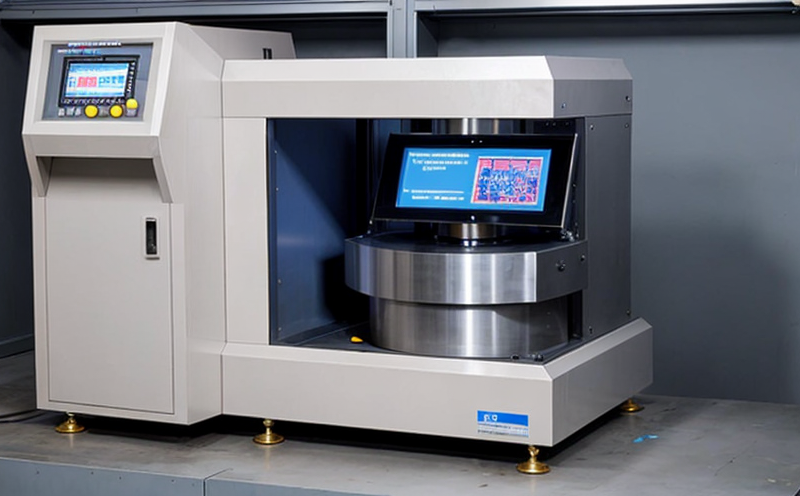ISO 4287 Surface Roughness Measurement of AM Parts
In additive manufacturing (AM), ensuring dimensional accuracy and surface finish is crucial to product quality. The ISO 4287 standard provides a comprehensive framework for measuring surface roughness, which is critical in the evaluation of additively manufactured parts. This service focuses on providing accurate and reliable measurement of surface roughness according to the ISO 4287 standard.
The accuracy of AM parts can vary significantly depending on the process parameters used during manufacturing. Surface roughness, defined as the microscopic surface irregularity, is an important quality metric that can impact functional performance, aesthetics, and overall reliability of the part. By adhering to ISO 4287 standards, we ensure consistent and repeatable measurements, which are essential for quality control in additive manufacturing.
The measurement of surface roughness using ISO 4287 involves several key parameters that define the characteristics of a surface. These include:
- Arithmetical average roughness (Ra): The arithmetic mean of the absolute values of the profile deviations from the zero line.
- Maximum height of the profile (Rz): The difference between the largest and smallest heights in a given sampling length.
- Ten-point height of the profile (Ry): The largest value obtained by averaging the ten highest peaks within the specified measuring range.
These parameters are crucial for assessing surface quality, particularly when it comes to ensuring that AM parts meet the required specifications. Our laboratory utilizes state-of-the-art metrology equipment and highly trained personnel to perform these measurements with precision and accuracy.
The process of measuring surface roughness according to ISO 4287 involves several steps:
- Selecting an appropriate sampling length based on the part geometry and application requirements.
- Preparation of the sample by cleaning it thoroughly to remove any contaminants that could affect measurement accuracy.
- Application of a coating or sealant if required, as per the specific needs of the material being tested.
- Setting up the metrology equipment and ensuring it is calibrated according to ISO standards.
- Taking multiple measurements across different areas of the part to account for variations in surface roughness.
The results obtained from these measurements are then analyzed using statistical methods to ensure compliance with specified tolerances. Our laboratory adheres strictly to international standards, ensuring that all measurements are accurate and reliable.
| Parameter | Description |
|---|---|
| Arithmetical average roughness (Ra) | The arithmetic mean of the absolute values of the profile deviations from the zero line. |
| Maximum height of the profile (Rz) | The difference between the largest and smallest heights in a given sampling length. |
| Ten-point height of the profile (Ry) | The largest value obtained by averaging the ten highest peaks within the specified measuring range. |
Scope and Methodology
Our laboratory adheres strictly to ISO 4287 standards when performing surface roughness measurements. This section outlines the scope of our services and the methodology we employ.
| Standard | Description |
|---|---|
| ISO 4287:1997 | This standard specifies the terms and definitions for surface roughness, as well as the methods of measurement. |
| ASTM E1004-16 | An American Society for Testing and Materials (ASTM) standard that provides guidance on measuring surface roughness using stylus instruments. |
The methodology we follow includes several key steps:
- Selection of appropriate measurement parameters based on the part geometry and application requirements.
- Preparation of the sample by cleaning it thoroughly to ensure accurate measurements.
- Application of a coating or sealant if required, as per specific material needs.
- Setting up the metrology equipment and ensuring it is calibrated according to ISO standards.
- Taking multiple measurements across different areas of the part to account for variations in surface roughness.
Industry Applications
The measurement of surface roughness is critical in various industries, including aerospace, automotive, and medical devices. In these sectors, ensuring that AM parts meet the required specifications can significantly impact product performance and reliability.
- Aerospace: Ensuring compliance with strict regulations regarding surface finish to prevent wear and tear of components.
- Automotive: Guaranteeing that parts fit together properly and perform optimally under various conditions.
- Medical Devices: Ensuring biocompatibility and minimizing the risk of infections by maintaining a smooth, uniform surface on implants.
Eurolab Advantages
Our laboratory offers several advantages when it comes to performing ISO 4287 surface roughness measurements for AM parts:
- State-of-the-art metrology equipment that ensures accurate and reliable measurements.
- Highly trained personnel with extensive experience in additive manufacturing and surface finish testing.
- Comprehensive reporting services, including detailed analysis of measurement results and recommendations for improvement where necessary.





